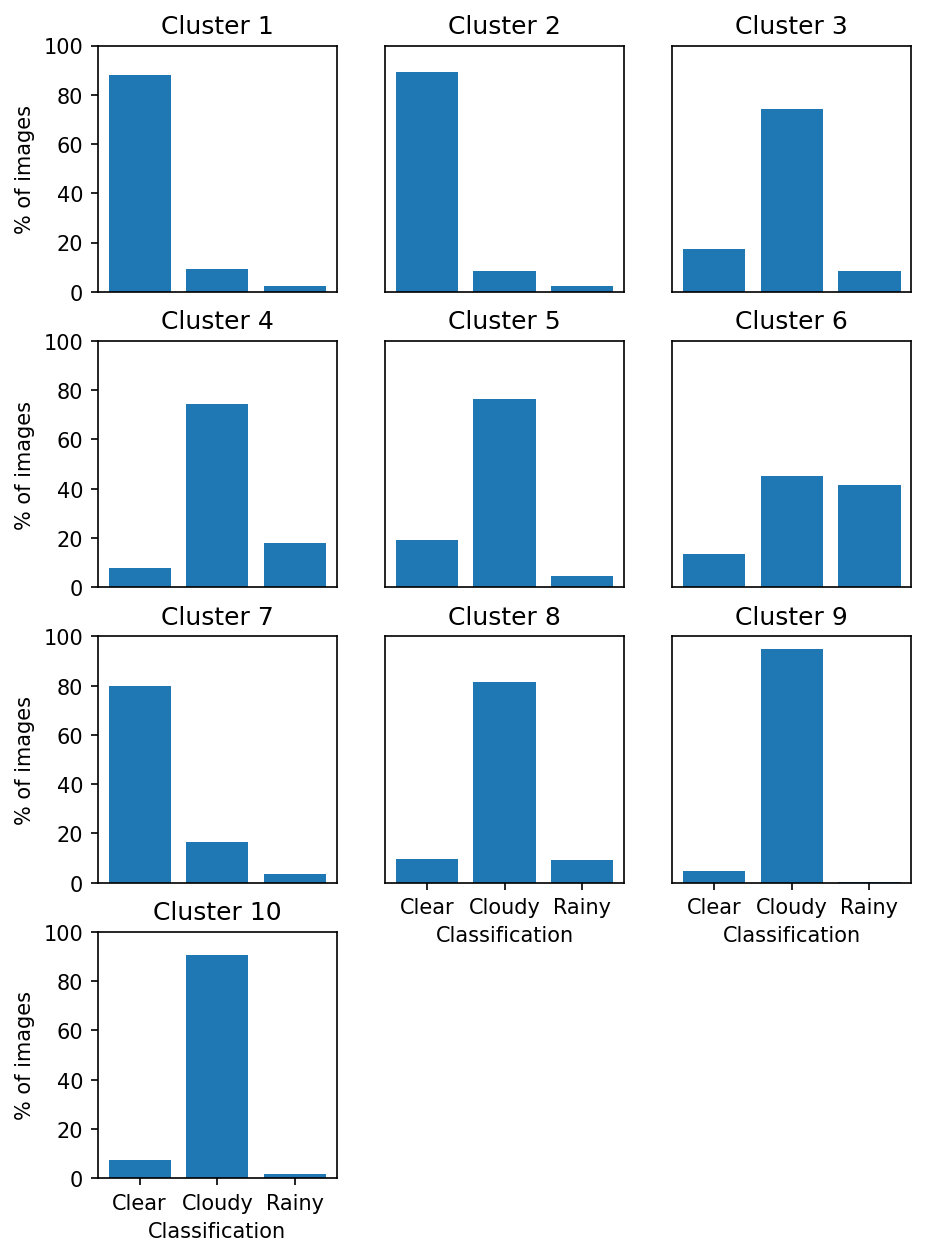ARMing the edge: Edge computing-capable machine learning algorithms for ARM Doppler lidars
Submitter
Jackson, Robert — Argonne National Laboratory
Area of Research
Cloud Processes
Journal Reference
Jackson R, B Raut, D Dematties, S Collis, N Ferrier, P Beckman, R Sankaran, Y Kim, S Park, S Shahkarami, and R Newsom. 2023. "ARMing the Edge: Designing Edge Computing-capable Machine Learning Algorithms to Target ARM Doppler Lidar Processing." Artificial Intelligence for the Earth Systems, 2(4), 220062, 10.1175/AIES-D-22-0062.1.
Science

Figure 1. The distribution of hand labels for each ARM Doppler lidar image for the automatically determined clusters. From journal.
ARM Doppler lidar spectra are difficult to store and manage due to the very large size of the data. However, the full Doppler spectra are needed for retrieving winds in clouds and precipitation from the lidar. We therefore developed a machine-learning-based pipeline for identifying cloudy periods using the Waggle computer installed at the ARM Southern Great Plains atmospheric observatory.
Impact
This algorithm will enable the transfer of full Doppler spectra from the Doppler lidar needed to obtain winds and cloud/rain properties in precipitating clouds. We use the Waggle node to run the algorithm on the Doppler lidar data and transfer full Doppler spectra in cloudy/rainy conditions. This will help the scientific community that is interested in investigation boundary-layer turbulence, winds, and precipitation by providing more complete data sets for investigation.
Summary
We trained a ResNet50-based model on 5-min ARM Doppler lidar signal-to-noise ratio images using supervised learning with hand-labeled images. The model is able to classify whether a scene is clear or cloudy with about 96% accuracy. In addition, we show that unsupervised learning, using a convolutional autoencoder, is able to discern ten clusters. Six clusters have cloud bases at distinct heights, three are clear-air dominated, and one cluster has a significant amount of rainfall.
Keep up with the Atmospheric Observer
Updates on ARM news, events, and opportunities delivered to your inbox
ARM User Profile
ARM welcomes users from all institutions and nations. A free ARM user account is needed to access ARM data.


















